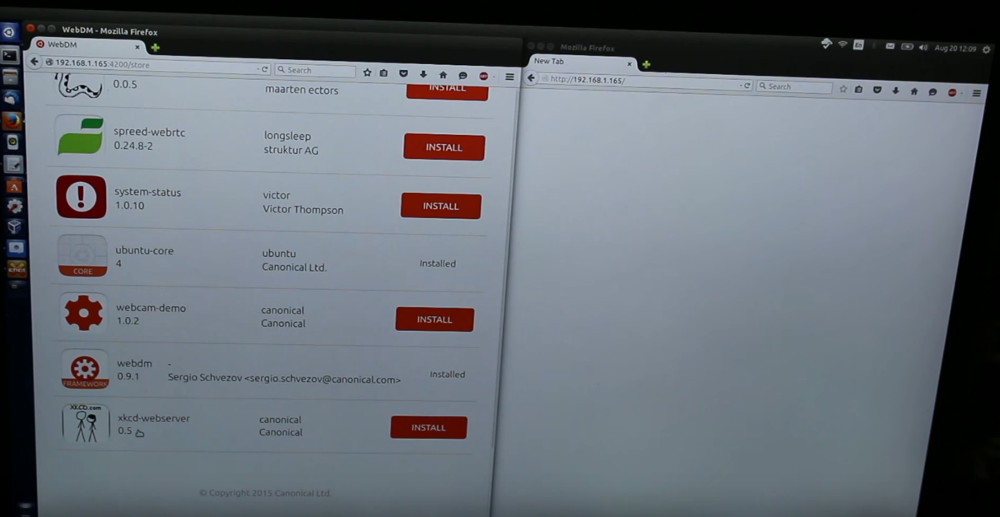I’ve previously written about Snappy and Unity 8’s Snappy Scope, back when I was first getting started on it. Since then, both the scope and Ubuntu Core itself have come a long way, so I thought it was time for an update and a quick demo.
When I was working on Snappy back when I wrote the other post I was running Ubuntu Core virtually, since I was using my embedded devices for other tasks. Since then, Canonical has sent me an Orange Matchbox to use, onto which I promptly installed Ubuntu Core. I was really hoping to be able to demo some hardware for you, but neither GPIO or I2C was supported, so I just used it to continue developing the Snappy Scope.
The scope is now much more functional, having the ability to list installed and store snaps, as well as install and uninstall them. It’s only missing a few things at this point:
- The ability to launch installed snaps (this is due to the .snap specification only having the definition of a service, not a launchable application).
- More details on the previews.
- Internationalization support.
Thankfully, not long after I got to that point, support for I2C and GPIO was finally added to the Raspberry Pi 2 image, so I was able to put a decent demo together of both items:
If you want to get up and running with the scope, the instructions haven’t really changed since the previous post (i.e. read the README). It’s also installed out-of-the-box on Ubuntu Personal, although please remember that the image overall is very rough. If you want to give it a spin anyway, you can create one for KVM (it won’t work with VirtualBox because, well, Mir) like so:
$ sudo ubuntu-device-flash personal rolling --channel edge --output personal.img
Post a comment if you have any questions, or hop on #snappy on Freenode.
Update
I’ve been asked a few times about the source code to PiGlow Top. It’s a project I wrote for this demonstration, and it’s on GitHub.
Update 2
It’s no longer possible to create an Ubuntu Personal image from ubuntu-device-flash. We’re switching some channels around and focusing on pocket desktop at the moment. Don’t worry, it’s not dead, just not being actively developed for the time being.
